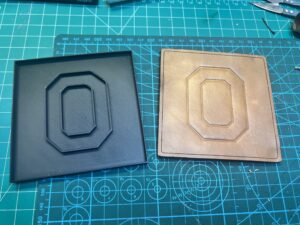New Project: LDO Box Turtle Planning
New Project Alert!
To start off the new year for content, I am in the process of preparing for the LDO BoxTurtle upgrade. This is going to put some new life into my Voron printer that I have in mind for this project, but more on that later. The purpose of this blog post is to provide a bit of background and planning in prep for this upcoming project, which I will be creating additional Youtube/video content as I proceed.
First things first… What is the Box Turtle?

From the Github: BoxTurtle is exactly what it appears to be — an open source AMS style filament changer for Klipper machines. BoxTurtle requires the AFC-Klipper Add-On (found here). The goal of BoxTurtle is to deliver a user experience as close to an AMS as possible in vanilla Klipper. i.e. an “AMS” for any klipperized printer regardless of form factor but VORON Design printers in particular.
But why would you need one?
There has been a big trend in 3d printing, particularly over the last 2-3 years to make multi-color/material printing more accessible. As with most technology, making the experience “just work” can be elusive, and it’s often not the priority. I first started on the Palette 2S, which was great for it’s time, but very pricey and tended to have a lot of problems. Filament would break, I could only go so fast due to the small buffer size, and purge towers were usually larger than the print itself which led to a ton of waste. Prusa also had their MMU system which was arguably even worse and more difficult to get working consistently. There have also been more “open source” attempts, like the Chameleon3d, which is great but requires a lot of tinkering, DIY, and has very limited documentation.
Bambu introduced their AMS system when the X1C was released. It was a game changer that “just worked” and didn’t require extensive calibration or tinkering. The AMS Lite also came out not long after, introduced with Bambu’s take on a bed-slinger printer, the A1 Mini.. In 2022, I purchased the A1 Mini + AMS for roughly the price that I paid for the original Palette 2, which I purchased in 2019 for $499, and I was printing out of the box with it within 30 minutes of setting up.
The challenge with Bambu, of course, is that it’s a proprietary, locked-in system. It’s simply not possible to add a Bambu AMS to another printer, at least not as of writing this article. And even if that were to happen, it would be “use at your own risk”.
Introducing the BoxTurtle
The BoxTurtle’s stated mission is delivering a good AMS for the rest of us. As of this article, pricing is around $299 for the kit, not including printed parts. It’s not quite “plug and play” but I believe it’s heading as much as one could reasonably expect. If it lives up to it’s promise, I think it’s going to be a great option for adding an AMS and keeping parity with Bambu machines, like the X1C or P1S that have gained in popularity and market share lately.
BoxTurtle Compatibility / Requirements
You’re going to need to have a Klipper based printer. Beyond that, you’ll also need to have a toolhead that can support cutting filament. Being able to change filament is, of course, critical in how an AMS system works. There are a few methods for doing this, including filament cutting or tip forming. FIlament cutting is the most reliable method for the BoxTurtle, and in order to have that capability you will need to modify your toolhead. This is also one of the reasons why this project isn’t, and probably won’t ever be truly “plug and play”. The recommended toolhead at the time of this article is a Stealthburner + CW2. There are a lot of variants of the Stealthburner, and contributors of the project aim to keep things as compatible as possible, but this is your safest bet at the moment.
If using a Stealthburner, you’re in luck, because there is a “FilamATrix” modification that will allow you to cut filament. You can learn more about all the components and parts of the BoxTurtle by reading the manuals, found here:
There are also a number of STL’s and printed parts you’re going to need. Head over here for the list:
In the screenshot below, you can see the details (from manual) on printed parts. You will need roughly 2 rolls of filament for this project.

Planning and Next Steps
I am going to be installing the BoxTurtle on my Voron 2.4, which I built a few years ago. Most of my parts are based on R2, so I am in pretty good shape. However, I am running an LGX Lite toolhead, along with the “legacy” cable chains and an old Toolhead board with a 14 pin cable. I’ve decided that I am going to also use this as an opportunity to upgrade my toolhead and have decided to go with the recommended CW2 + Stealthburner, along with an LDO Stealthburner PCB that will allow me to use USB and ditch the 14 pin cable.
Once everything arrives, I plan on doing an Unboxing video and going into more of the details of this project. In the mean time, feel free to hit me up in the Discord (@gregsmakercorner) or on Twitter (@greghuber). And of course, there will be printing. I am planning on acquiring some of the parts (for the Stealthburner + FilamATrix) from @thunderkeys, who is also a contributor to the BoxTurtle project and quite active in the Discord. I do plan on printing some of the parts as well to help keep total costs of this project down.
Thanks for stopping by and I hope to get an update out soon!


